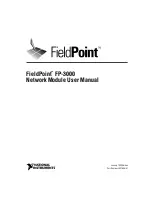
32
Figure 16 Label advertisement control diagram
A label advertisement policy on an LSR and a label acceptance policy on its upstream LSR can
achieve the same purpose. As a best practice, use label advertisement policies to reduce network
load if downstream LSRs support label advertisement control.
Before you configure an LDP label advertisement policy, create an IP prefix list. For information
about IP prefix list configuration, see
Layer 3—IP Routing Configuration Guide
.
To configure a label advertisement policy:
Step Command
Remarks
1.
Enter system view.
system-view
N/A
2.
Enter LDP view or enter
LDP-VPN instance
view.
•
Enter LDP view:
mpls ldp
•
Enter LDP-VPN instance view:
a. mpls ldp
b. vpn-instance
vpn-instance-name
N/A
3.
Configure an IPv4 label
advertisement policy.
advertise-label prefix-list
prefix-list-name
[
peer
peer-prefix-list-name
]
By default, LDP advertises all
IPv4 FEC-label mappings
permitted by the LSP generation
policy to all peers.
4.
Configure an IPv6 label
advertisement policy.
ipv6 advertise-label prefix-list
prefix-list-name
[
peer
peer-prefix-list-name
]
By default, LDP advertises all
IPv6 FEC-label mappings
permitted by the LSP generation
policy to all peers.
Configuring a label acceptance policy
A label acceptance policy uses an IP prefix list to control the label mappings received from a peer.
As shown in
, LSR A uses an IP prefix list to filter label mappings from LSR B, and it does
not filter label mappings from LSR C.
Содержание HPE FlexNetwork MSR Router Series
Страница 10: ...viii Index 540 ...
















































